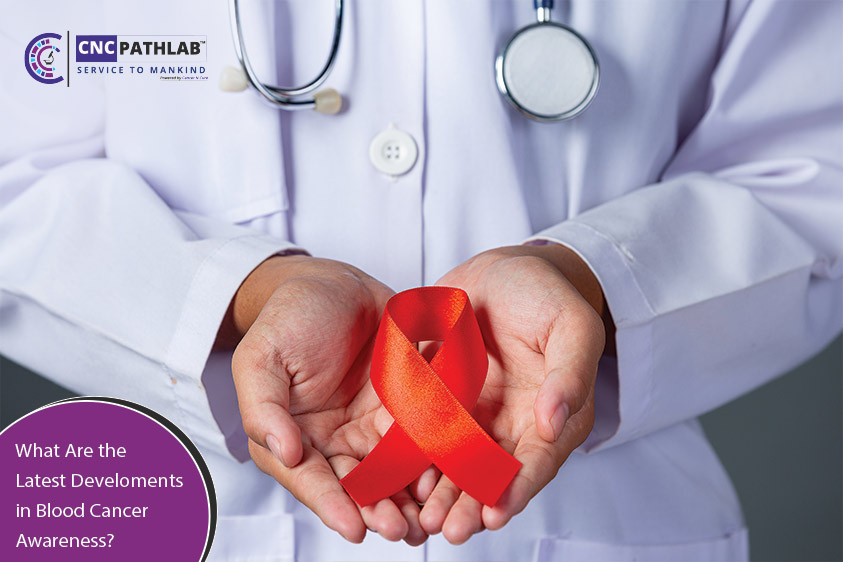What are the symptoms of the H3N2 virus?
Where can I get an h3n2 test in Delhi?
If you suspect that you or someone you know may have been infected with the H3N2 virus in Delhi, it is important to get tested as soon as possible. Here are someplace where you can get an H3N2 test in Delhi:
CNC PATH LAB - This diagnostic center offers a wide range of tests, including H3N2 testing. They have several branches in Delhi, including in Dwarka, Saket, and Vasant Kunj, Karol Bagh.
It is important to note that the availability of H3N2 testing may vary depending on the location and the specific diagnostic center or hospital. It is recommended to call ahead or check the website of the healthcare provider to confirm that they offer blood test in Delhi and to make an appointment if necessary.
Are H3N2 Tests Available in Delhi?
Yes, H3N2 tests are available in Delhi. These tests can be conducted in various diagnostic centers and hospitals in the city. H3N2 is a strain of the influenza virus that causes respiratory illness in humans. The symptoms of H3N2 are similar to other flu strains, including fever, cough, sore throat, fatigue, and body aches.
To get tested for H3N2, you can visit a diagnostic center or hospital that offers flu testing services. The test involves collecting a sample of respiratory secretions, such as mucus, from the patient's nose or throat. The sample is then analyzed in a laboratory to determine if the patient is infected with H3N2.
In conclusion, H3N2 tests are readily available in Delhi and can be conducted in various diagnostic centers and hospitals. It is important to seek medical attention if you experience any flu-like symptoms to prevent the spread of the virus and receive appropriate treatment.
What is H3N2? H3N2 Test in Delhi
H3N2 typically refers to a diagnostic test that is used to detect the presence of the H3N2 virus in a patient's respiratory system, usually through a nasal or throat swab. This test can help healthcare providers to identify whether a patient is infected with H3N2, which can help guide treatment decisions and prevent the spread of the virus to others.
It is worth noting that H3N2 is just one of many strains of the influenza virus, and there are other tests available to detect other types of influenza as well.
What are the symptoms of the H3N2 virus?
The H3N2 virus, also known as the influenza A virus, is a type of flu virus that can cause mild to severe respiratory illness in humans. The symptoms of the H3N2 virus are similar to those of other types of flu and can range from mild to severe. Here are some of the common symptoms of the H3N2 virus:
- Fever: A high fever is one of the most common symptoms of the H3N2 virus. The fever can range from 100.4°F (38°C) to 104°F (40°C) and can last for several days.
- Body aches: Muscle and body aches are another common symptom of the H3N2 virus. The aches can be mild or severe and can affect the whole body.
- Cough: A dry cough is a common symptom of the H3N2 virus. The cough can be persistent and may last for several weeks.
- Sore throat: A sore throat is another common symptom of the H3N2 virus. The throat may be scratchy and painful, and swallowing may be difficult.
- Fatigue: Fatigue and weakness are common symptoms of the H3N2 virus. People with the virus may feel extremely tired and may have difficulty performing daily tasks.
- Headache: Headache is a common symptom of the H3N2 virus. The headache may be mild or severe and may last for several days.
How long does the H3N2 virus last?
The duration of the H3N2 virus, also known as the influenza A virus, can vary from person to person. In general, the symptoms of H3N2 virus usually last for about 7-10 days but can extend up to two weeks or more, depending on the individual's overall health and immune system.
The symptoms of the H3N2 virus typically start to appear within 1-4 days of exposure to the virus. The symptoms can include fever, cough, sore throat, runny or stuffy nose, body aches, headache, fatigue, and sometimes vomiting and diarrhea.
It is important to note that while the symptoms of the H3N2 virus can be similar to those of the common cold, the flu can be more severe and can lead to complications such as pneumonia, bronchitis, and sinus and ear infections, particularly in young children, older adults, and those with weakened immune systems.
To minimize the duration of the H3N2 virus, it is recommended to get plenty of rest, stay hydrated, and take over-the-counter medications such as acetaminophen and ibuprofen to alleviate fever and body aches. Antiviral medications such as Tamiflu may be prescribed by a doctor if the person is at high risk of complications or has severe symptoms.
To prevent the H3N2 virus from spreading to others, it is important to practice good hygiene, such as covering your mouth and nose when coughing or sneezing, washing your hands frequently with soap and water, and avoiding close contact with people who are sick. The influenza vaccine can also provide protection against the H3N2 virus and is recommended for everyone, particularly those at higher risk of complications such as young children, older adults, and people with chronic medical conditions.
In conclusion, the H3N2 virus can cause a range of symptoms including fever, cough, sore throat, body aches, fatigue, and headache. While the symptoms are usually mild and last for about 7-10 days, the flu can lead to serious complications in certain individuals. To minimize the duration of the virus and prevent its spread, it is important to practice good hygiene, get vaccinated, and seek medical attention if necessary.
When does the H3N2 virus usually peak?
The H3N2 virus, also known as the influenza A virus, typically peaks in the United States during the winter months, particularly between December and February. However, the peak timing can vary from season to season and from region to region. It's important to note that the timing of the peak can also be affected by various factors, including vaccination rates, weather patterns, and viral mutations. Therefore, it's essential to stay informed about the latest flu activity and take necessary precautions to protect yourself from this contagious virus. This may include getting an annual flu shot, washing your hands frequently, covering your mouth and nose when coughing or sneezing, avoiding close contact with sick individuals, and staying home if you develop flu-like symptoms. By being vigilant and proactive, you can help prevent the spread of the H3N2 virus and other strains of the flu.
Does the H3N2 virus have different strains?
Yes, the H3N2 virus has different strains. Influenza viruses, including H3N2, undergo constant genetic mutations, leading to the emergence of new strains. These changes can occur gradually over time or suddenly, resulting in the appearance of a new variant. The H3N2 virus has multiple subtypes, and each subtype can have different strains. For example, in the 2014-2015 flu season, the H3N2 virus caused a severe outbreak in the United States, and the predominant strain was different from the previous year's strain. Similarly, in the 2018-2019 flu season, a new H3N2 variant emerged in Australia, leading to increased hospitalizations and deaths. Therefore, it is essential to monitor the H3N2 virus closely and update the flu vaccine regularly to provide protection against the latest strains.
Are there any treatments available for the H3N2 virus?
Yes, there are treatments available for the H3N2 virus. H3N2 is a subtype of the Influenza A virus, and like all strains of the flu, it can be treated with antiviral medications.
The most commonly used antiviral medications for H3N2 are oseltamivir (Tamiflu) and zanamivir (Relenza). These drugs work by interfering with the ability of the virus to replicate, thereby reducing the severity and duration of symptoms.
It's important to note that these medications are most effective when taken within the first 48 hours of the onset of symptoms. They are also most effective when used as part of a comprehensive treatment plan that includes rest, hydration, and other supportive measures.
In addition to antiviral medications, there are also vaccines available that can help prevent H3N2 infection. The flu vaccine is typically updated every year to include strains that are most likely to be in circulation during the upcoming flu season. Getting vaccinated is the best way to protect yourself against the flu, including H3N2.
If you think you have H3N2 or any other type of flu, it's important to see a healthcare provider for diagnosis and treatment. They can help you determine the best course of action based on your individual symptoms and health status.
How long does the H3N2 virus last?
The duration of the H3N2 virus, also known as the influenza A virus, can vary depending on the individual's immune system and overall health. On average, the virus can last for about 7-10 days, but symptoms may persist for up to two weeks.
The symptoms of H3N2 may include fever, coughing, sore throat, body aches, and fatigue. These symptoms may start to appear within 1-4 days after exposure to the virus. It is important to note that the virus is highly contagious, and people can spread it to others even before they start experiencing symptoms themselves.
To prevent the spread of the H3N2 virus, it is recommended to practice good hygiene habits such as washing hands frequently, covering your mouth and nose when coughing or sneezing, avoiding close contact with sick individuals, and staying home if you are feeling ill.
If you suspect that you have contracted the H3N2 virus, it is important to visit your healthcare provider for proper diagnosis and treatment. Antiviral medications may be prescribed to help reduce the severity and duration of symptoms, especially if taken within the first 48 hours of the onset of symptoms.
In summary, the H3N2 virus can last for about 7-10 days, but individual cases may vary. Prevention and early treatment are key to reducing the spread of the virus and managing symptoms.


.jpg)


.jpg)
